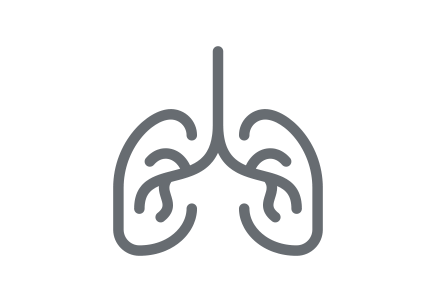500,000 +
Healthcare workers exposed annually in the US alone(6)

Healthcare workers exposed annually in the US alone(6)

Cigarettes OR staff are exposed to daily(7)

The number of respiratory problems reported by perioperative nurses compared to the general population(8)

is the rate of speed that smoke particles can travel and be evenly distributed throughout the O.R.(9)
Together We Can
Clear the Air®
77% of particles in surgical smoke are not filtered out by standard surgical masks(1),(2).
Why is Surgical Smoke
So Hazardous?
Surgical smoke is a dangerous by-product generated from the use of lasers, electro-surgical pencils, ultrasonic devices, and other surgical energy-based devices. As these instruments cauterize vessels and destroy (vaporize) tissue, fluid, and blood, a gaseous material known as surgical smoke is created
What You’re Breathing In
![]() Chemical
Chemical
150 Chemicals and 40 carcinogenic chemicals(3)
![]() Biological
Biological
Viable bacteria and virus(4)
![]() Physical
Physical
Ultra-fine particles similar to coal dust(5)
Take the First Step in Going Smoke-Free
Taking your facility smoke-free may seem like an overwhelming project, but CONMED’s Clear the Air® program has the process down to a science. It is designed to ensure a seamless transition to a smoke-free operating room. Through this program, we offer a step-by-step process to help you achieve your smoke-free goals.
CONMED’s Clear the Air® program is designed to help you meet your smoke evacuation goals. Now the best way to get started with that program is our first step, which is Education. The Clear the Air® CE Course on surgical smoke provides evidence-based insights on the hazards of surgical smoke and provides 2 contact hours to nurses and scrub techs.
Leaders in Surgical Smoke Management.
With the largest portfolio of surgical smoke management products on the market, CONMED has a solution for you!
REFERENCES:
(1) McCormick, P. “Bovie Smoke: A perilous Plume.” AANS Neurosurgeon 17.1 (2008): 10-
12. Web. March, 2016.
(2) Ball, K. “Management of Surgical Smoke in the Perioperative Setting.” AORN Annual
Conference Presentation. Web. January, 2016.
(3) Barrett WL, Garber SM. Surgical Smoke: A review of the literature. Is this just a lot of hot
air? Surg Endosc. 2003;17(6):979-87
(4) Hallmo P, Naess O. Laryngeal papillomatosis with human papillomavirus DNA contracted
by a laser surgeon. Eur Arch Otorhinolaryngol. 1991;248(7):425-427.
(5) Baggish, M.S., Polesz, B.J., Joret, D., Williamsson, P. and Refai,A. (1991), Presence of
human immunodeficiency virus DNA in las smoke. Lasers Surg. Med., 11:197-203,
doi:10.1002/lsm.1900110302
(6) Laser/Electrosurgery Plume, Occupational Safety and Health Administration
(OSHA). osha.gov. March, 2017.
(7) Hill DS, O’Neill JK, Powell RJ, Oliver DW. Surgical smoke—a health hazard in the
operating theatre: a study to quantify exposure and a survey of the use of smoke extractor
systems in UK plastic surgery units. J Plast Reconstr Aesthet Surg. 2012; 65(7):911-916.
(8) Ball, K. “Management of Surgical Smoke in the Perioperative Setting.” AORN Annual
Conference Presentation.
(9) Hill, Daniel S., et al. “Surgical Smoke – A Health Hazard in the Operating Theatre. A Study
to Quantify Exposure and a Survey of the Use of Smoke Extractor Systems in UK Plastic
Surgery Units.” Journal of Plastic Reconstructive & Aesthetic Surgery. (2012): 911-16.
| HEAD | OFFICE |
| Tel | +27 (11) 966 0600 |
| info@medhold.co.za | |
| Address | MSI Business Park, 68 Rigger Road, Spartan, Kempton Park, Gauteng, 1619 |